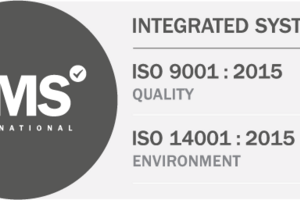06 June 2019
Five things you need to know about ‘net-zero’
The built environment contributes around 40% of the UK’s total carbon footprint. This phenomenal statistic from the UK Green Building Council draws attention to the need for new ways to integrate the ambition of ‘net zero’ into the design and operation of our buildings.
Here at Greenlite Group we want to share our own perspective on this important ambition. Net zero buildings are clearly the way things need to move for the sake of future generations. As such we think it is essential for organisations (building owners and operators, FMs or even services suppliers like ourselves) to do more to mitigate against climate change. But, first, we want to help our customers understand what net zero actually means - and how it can be achieved. Keep reading… our quick guide has all the answers.
1. The 2050 target
The UK can end its contribution to global warming by setting an ambitious new target to reduce its greenhouse gas emissions to zero by 2050 according to the Committee on Climate Change (CCC).
Achieving a net-zero target by the middle of the century is in line with the UK’s commitment under the Paris Agreement; the pact which the UK and the rest of the world signed in 2015 to curb dramatically the polluting gases that cause climate change.
The recommended target is achievable with known technologies, alongside improvements in people’s lives, and should be put into law as soon as possible says the CCC.
2. Legislation’s crucial role
Whilst the CCC believes the foundations are in place, it has warned that policies will have to ramp up significantly for a net-zero emissions target to be credible.
The conclusion that the UK can achieve a net-zero target by 2050 and at acceptable cost is entirely contingent on the introduction of clear, stable and well-designed policies across the emitting sectors of the economy.
A number of policies are already active or in development. However, the CCC believes these must be urgently strengthened and must deliver tangible emissions reductions as current policy is not enough even for existing targets.
3. It has the backing of big businesses
More than 120 of Britain's major businesses urged the UK government to boost its climate change targets with the adoption of a net zero emissions goal for 2050.
A collective letter sent to Prime Minister Theresa May at the end of May called on the Government to adopt the Committee on Climate Change’s (CCC’s) recommendations on legislating for a net-zero carbon economy by 2050 in full, with immediate effect. The letter’s 128 signatories represent more than seven million workers and £20 trillion in assets under management across 190,000 businesses.
Many of the signatories have aligned themselves with the Paris Agreement, either by setting science-based emissions targets or pledging to achieve net-zero by mid-century, and they have urged the Government to follow suit to help businesses deliver the “innovation and investment required” for a zero-carbon economy while ensuring that the low-carbon transition is “delivered fairly.”
4. The journey towards net zero is also gaining the support of architects
Some of the UK’s most influential architecture practices have joined forces to issue an unprecedented rallying cry for the profession to act on climate change. In an open letter, 17 winners of the RIBA Stirling Prize argued that the buildings and construction sector accounts for nearly 40% of energy-related carbon dioxide emissions, and more must be done to tackle the ’most serious issue of our time’.
Foster + Partners pledged to be the first architecture practice to sign onto the Net Zero Carbon Buildings Commitment. Launched by the World Green Building Council (WGBC) in an effort to decarbonize construction, all new buildings in the firm's portfolio will be carbon neutral by 2030.
Since it was launched in September 2018, 50 signatories have now signed up to the Net Zero Carbon Buildings Commitment.
5. Two-pronged approach
A new framework unveiled by the UK Green Building Council will help the UK construction and property industry transition new and existing buildings to become net zero carbon by 2050 through a two-pronged approach.
Net zero carbon – construction: the embodied emissions associated with products and construction should be measured, reduced and offset to achieve net zero carbon.
Net zero carbon – operational energy: The energy used by the building in operation should be reduced and where possible any demand met through renewable energy. Any remaining emissions from operational energy use should be offset to achieve net zero carbon.
Through these two approaches, net zero carbon buildings will be achieved by reducing construction impacts, reducing operational energy use, increasing renewable energy supply and off-setting any remaining carbon.
The framework offers guidance for developers, owners and occupiers targeting net zero carbon buildings, and stakeholders are encouraged to apply it as a whole, or in its component parts, to help build the industry’s capacity to deliver net zero carbon buildings.


